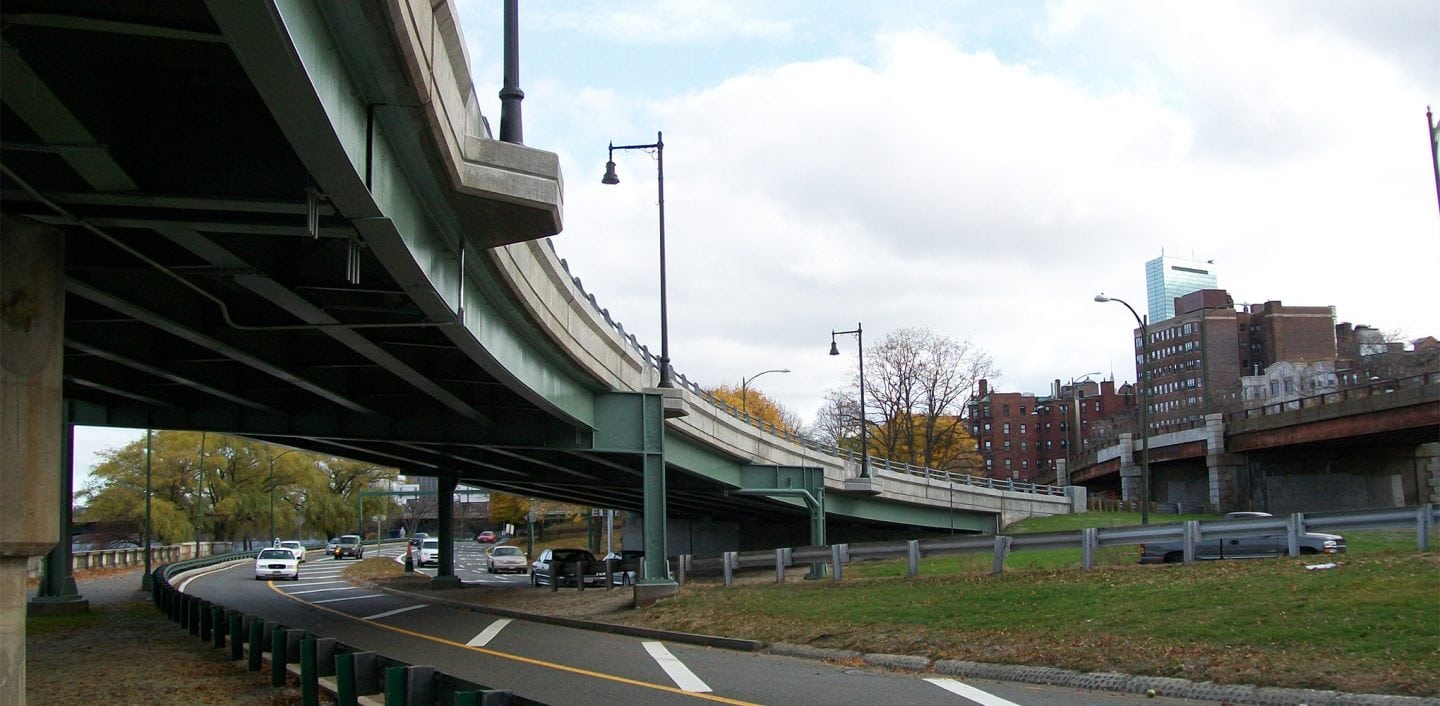Bowker Interchange Bridge Rehabilitation
Boston, Massachusetts

Ramp H, a curved 6-span ramp stretching 425 feet, served as a vital connector between the main overpass, Beacon Street, and Storrow Drive Westbound.
BETA designed a bridge rehabilitation program, including the removal and replacement of the bridge deck and parapets, cleaning and painting of the structural steel, repair and repositioning of the bearings, installation of a new roadway lighting system, repair of cracked and spalled substructure concrete, and the installation of a supplemental anchorage at the east abutment to arrest its lateral movement.
A fairly elaborate Traffic Management Plan (TMP) was developed to accomplish the planned work. In order to maintain traffic operations, the rehabilitation required staged construction including alternating extended closures of the Beacon Street and overpass access points to Ramp H, as well as some short-term complete closures of Ramp H itself. The TMP also involved the rerouting of traffic onto City streets and the implementation of extensive signing and traffic signal timing adjustments.
Additionally, the Dr. Paul Dudley White Charles River Path, a popular recreational pathway along the Charles River, runs beneath a portion of Ramp H. With the lack of adjacent land to which pedestrians could be rerouted, the project included a temporary floating walkway. Prior to the start of construction, the floating walkway was installed in the Charles River alongside the project for the duration of construction to allow pedestrians uninterrupted use of the pathway.


